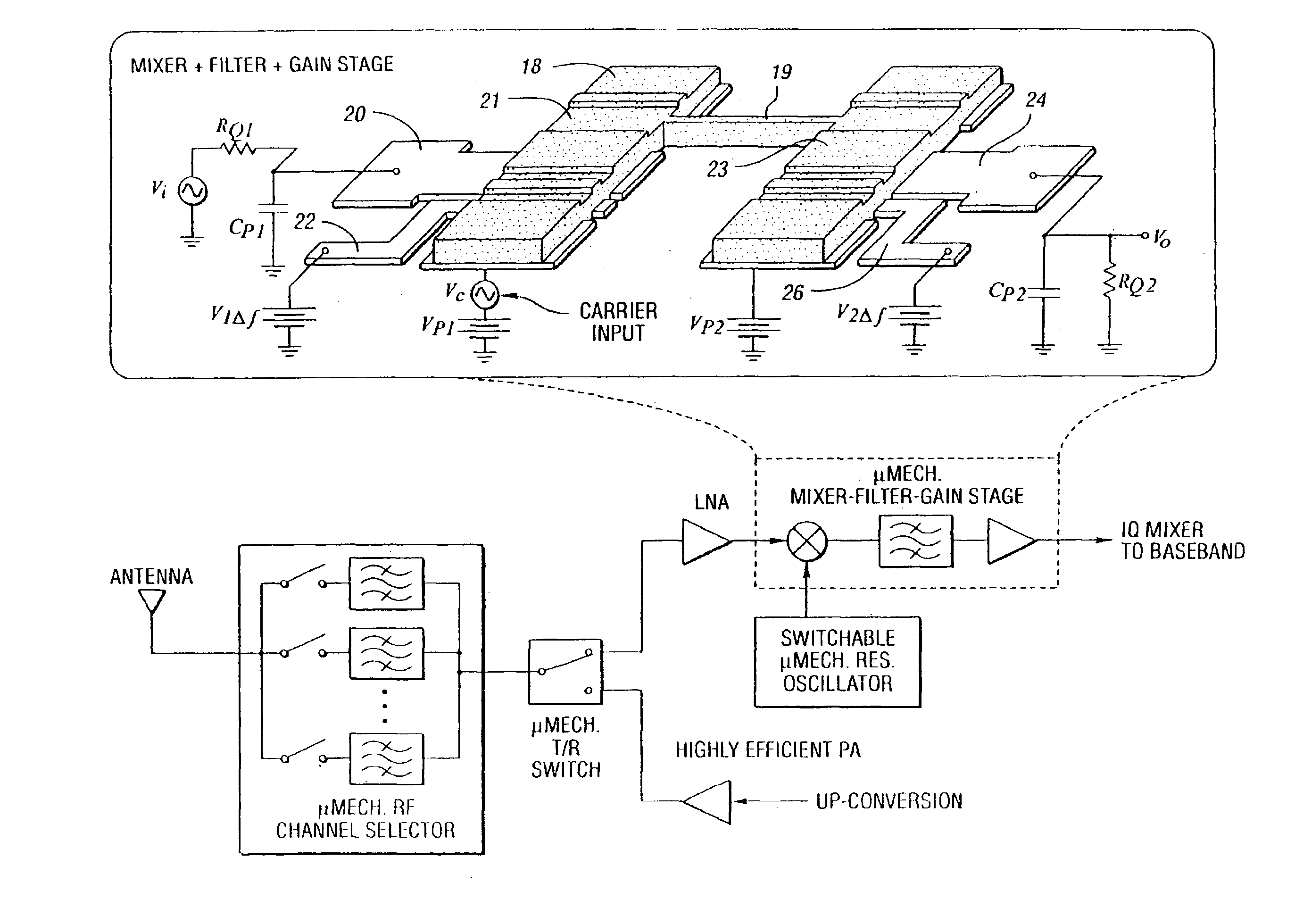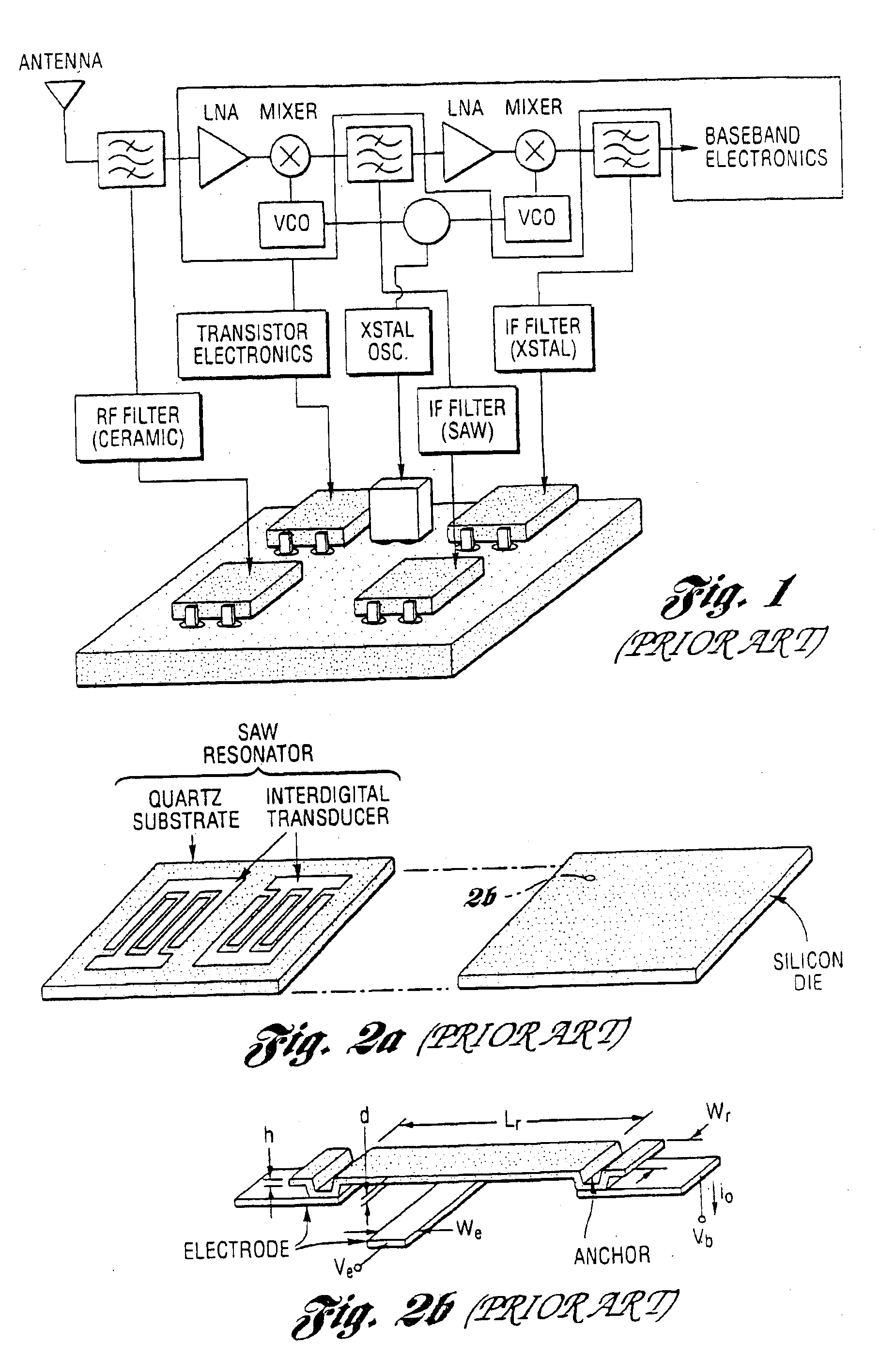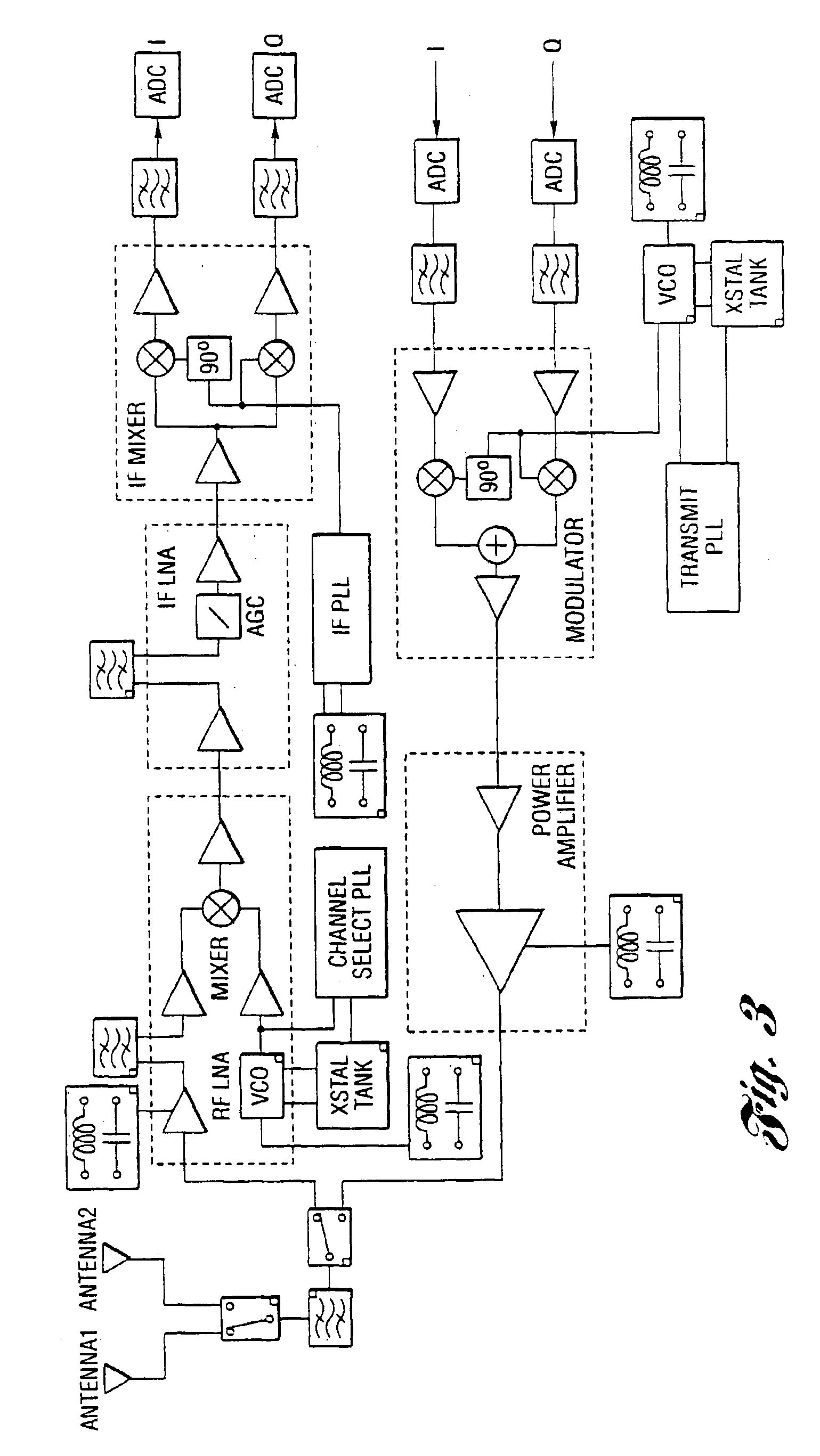Method and subsystem for processing signals utilizing a plurality of vibrating micromechanical devices
a micromechanical device and processing method technology, applied in relays, electrostatic generators/motors, generators/motors, etc., can solve the problems of large outperform of comparable filters implemented using transistor technologies, affecting the performance and affecting the processing efficiency of the signal processing system. , to achieve the effect of reducing the need for rf front-end power
- Summary
- Abstract
- Description
- Claims
- Application Information
AI Technical Summary
Benefits of technology
Problems solved by technology
Method used
Image
Examples
Embodiment Construction
)
[0067]To illustrate more concretely the specific transceiver functions that can benefit from micromechanical implementations to be discussed herein, FIG. 3 presents a system level schematic block diagram for a typical super-heterodyne wireless transceiver. A small box is positioned in the corner of each box to represent a component that can be replaced with a micromechanical (MEMS) version. As implied in FIG. 3, several of the constituent components can already be miniaturized using integrated circuit transistor technologies. These include the low noise amplifiers (LNA's) in the receive path, the solid-state power amplifier (SSPA) in the transmit path, synthesizer phase-locked loop (PLL) electronics, mixers, and lower frequency digital circuits for baseband signal demodulation. Due to noise, power, and frequency considerations, the SSPA (and sometimes the LNA's) are often implemented using compound semiconductor technologies (i.e., GaAs). Thus, they often occupy their own chips, se...
PUM
 Login to View More
Login to View More Abstract
Description
Claims
Application Information
 Login to View More
Login to View More - R&D
- Intellectual Property
- Life Sciences
- Materials
- Tech Scout
- Unparalleled Data Quality
- Higher Quality Content
- 60% Fewer Hallucinations
Browse by: Latest US Patents, China's latest patents, Technical Efficacy Thesaurus, Application Domain, Technology Topic, Popular Technical Reports.
© 2025 PatSnap. All rights reserved.Legal|Privacy policy|Modern Slavery Act Transparency Statement|Sitemap|About US| Contact US: help@patsnap.com



